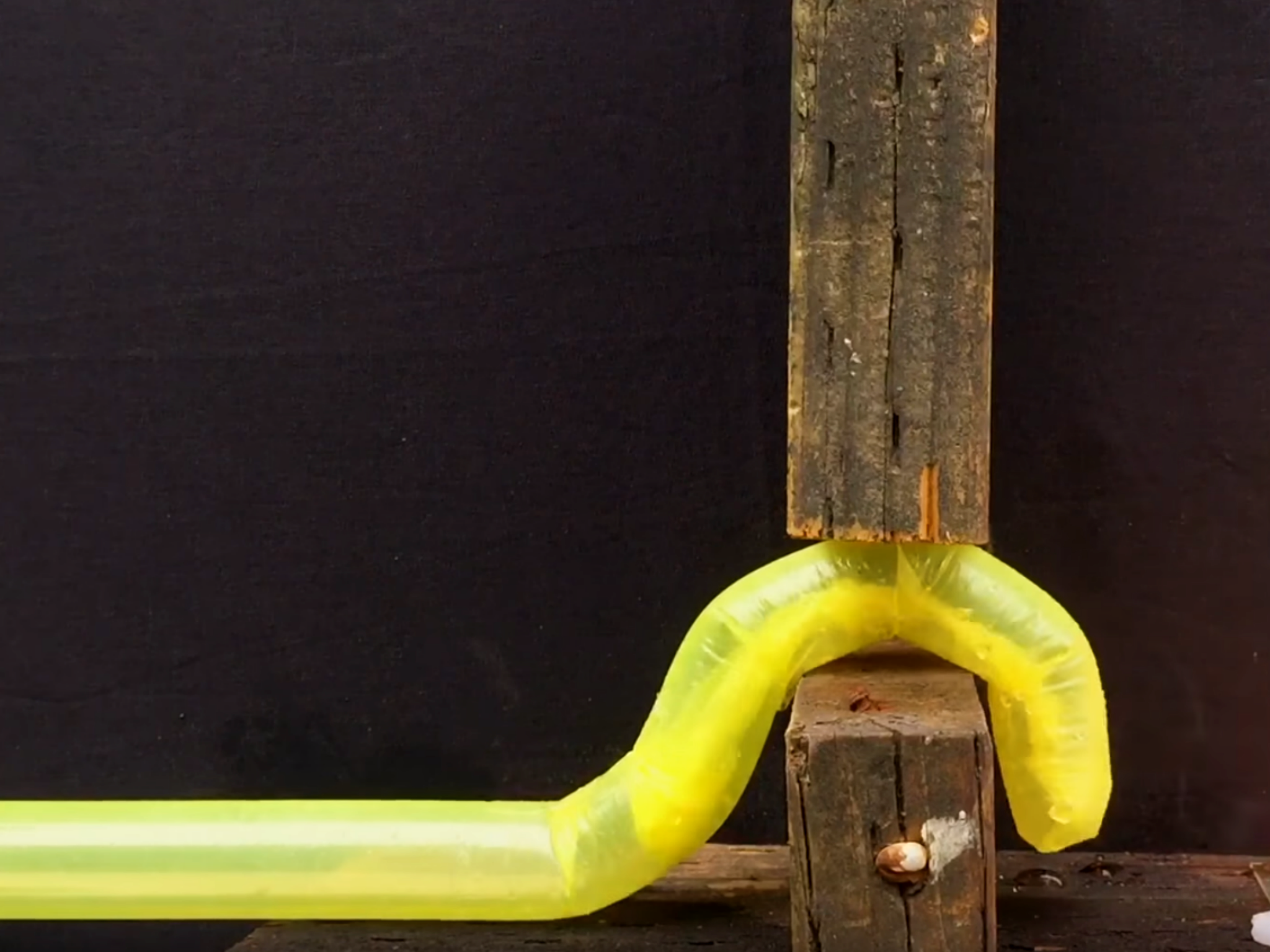Incredible worm-like robot can climb up into the air, make itself bigger and squeeze into small holes
'If there is a way it can extend, it probably will'

A robot that can grow rapidly and turn corners has been created by scientists.
Stanford University researchers built the soft, worm-like robot, which can also squeeze itself through small holes.
It’s designed to mimic the movements of plants, which can grow around physical obstacles, but at speeds comparable to animals.
The robot is made of polyethylene and can grow from 28cm to 72m and change direction by pumping air through its internal chambers.
“Across kingdoms and length scales, certain cells and organisms navigate their environments not through locomotion but through growth,” reads the report, which was published in Science Robotics.
“This pattern of movement is found in fungal hyphae, developing neurons, and trailing plants, and is characterized by extension from the tip of the body, length change of hundreds of percent, and active control of growth direction. This results in the abilities to move through tightly constrained environments and form useful three-dimensional structures from the body.
“We report a class of soft pneumatic robot that is capable of a basic form of this behavior, growing substantially in length from the tip while actively controlling direction using onboard sensing of environmental stimuli.”
It can move at up to 22mph, and is also capable of lifting heavy objects and turning taps.
“One thing we found with this growing robot, is that it is surprisingly difficult to stop it from lengthening when it is pressurised – if there is a way it can extend, it probably will,” Joey Davis Greer, one of the researchers, told the Verge.
Its creators say stronger versions of the robot could be used to help with search and rescue missions in the future.
They also believe it can be used in surgery, to guide catheters, for instance.
Join our commenting forum
Join thought-provoking conversations, follow other Independent readers and see their replies
Comments
Bookmark popover
Removed from bookmarks